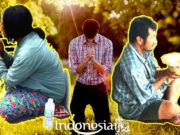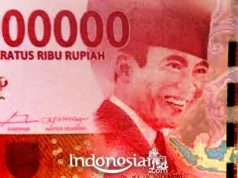Live or die, let me live in the midst of this people to spread your word and kingdom. Amen (Dr. Ingwer Ludwig Nommensen)
Talking about the Batak civilization, perhaps it would be a different story if Dr. Ingwer Ludwig Nommensen never set foot in the Batak Land. Who is he and why is he dubbed the “Batak Apostle”?
Nommmensen is an ordinary man with extraordinary determination. The struggle of the priest who was born on February 6, 1834 in Marsch Nordstrand, North Germany, to release animism and the underdevelopment of the Batak civilization deserves respect.
So no wonder, once at the zending session in Barmen, when Danish and German envoys claimed that Nommensen was their citizen, Rev. Dr. Justin Sihombing who was present at that time actually insisted that Nommensen was a Batak person.
Young Nommensen, when he was even 28 years old had moved to leave Nordstrand and lived in the Batak Land until his death at the age of 84 years.
During his youth, he spent his education in theology (1857-1861) at the Rheinische Missions-Gesselscha ft (RMG) Barmen, after receiving a session on Sunday Palmarum 1849, when he was 15 years old.
Actually, the arrival of European evangelists to the Batak Land had already begun since the 1820s. In 1824 the English Baptist Church sent two evangelists: Reverend Burton Ward and Reverend Evans who first arrived in Batavia. Rev. Evans preaches in South Tapanuli, Reverend Burton Ward in the Silindung area. Unfortunately, they were rejected. Animesme is still strong in the life of the Batak tribe.
Ten years later, two American evangelists: Samuel Munson and Henry Lyman arrived at Silindung. However, they instead found their death there after being killed by a group of people in Saksak Lobu Pining, around Tarutung. The killing was carried out by order of King Panggalamei. The two missionaries were buried in Lobu Pining, about 20 kilometers from Tarutung City, heading towards Sibolga City.
The dream of simplicity
Nommensen’s dream of becoming an evangelist had appeared since childhood, although in those days he had become accustomed to living simply. In that simplicity, due to his parents who were unemployed and often sick, he even starved because he did not have food so he was forced to look for leftovers in rich people’s homes with his friends. So, since the age of 8 years he has become a wage pastor until the age of 10 years.
But, obstacles did not escape hampering the noble ideals. Once, when he was 12 years old, Nommensen had an accident while chasing with his friend and was hit by a horse-drawn carriage, making his legs paralyzed. But God wills differently.
When the doctor who treated him suggested that his leg be amputated, he refused and asked that his mother pray with the condition, if the prayer was answered then he would preach the gospel to people who did not know Christ. Not long after the prayer was answered, he recovered.
In 1853, with a mature decision, armed with shoes and makeshift clothing, he left his hometown to achieve his ideals and his promise, which was also delayed because he failed to become a polish in the port of Wick. He then met with Hainsen, his former teacher at Boldixum. Hainsen then hired him as a assistant teacher at Tonderm after some time as a koster. It was here that he met Pastor Hausted and expressed his ideals. He also applied for the Rhein Gospel Preaching Institution or RMG Barmen.
Nommensen then matured his knowledge of the gospel with a theology lecture in 1857, when he was 23 years old. At that time, his job as a sweeper, gardener and school clerk, he also visited, until he graduated and was ordained as a priest on October 13, 1861, who then took him to the Batak Land on June 23, 1862.
From Norsdtrand to Silindung
Nommensen, who is now still remembered and called by the honorary title “Ompu I, Batak Apostel”, on his zending mission was not without obstacles. In fact, in several times he will be killed by slaughtering and poisoning it. The reason, he was suspected of being a spy “the bottar spy” (this stereotype was directed at the Dutch).
But he is not afraid because his promises to God must be fulfilled. At one time he also said, “No way, not even a tip of hair can be taken if it is not by the will of God.”
Previously, after being officially sent from RMG Barmen he first met Dr. H. N. Van der Tuuk, who previously in 1849 had been sent by the Dutch Bible Society to study Batak Language.
After getting more information about the Batak, then on December 24, 1861 he departed on the ship “Partinax” to Sumatra and arrived in Padang on May 16, 1862. From there he then continued his journey to Barus via Sibolga.
It was here that he first met directly with the Batak people then learned the language and customs. Only, he was not there long. In addition to having entered the religion of Islam, he saw the value of inter-tribal plurarity that had been integrated there: Toba, Angkola, Malay, Coastal.
So, after a few months living there, he decided to go to another area: Sipirok. Then, upon the decision of the 2nd pastor’s meeting on October 7, 1862 in Sipirok (after previously serving residents in Parau Sorat, and establishing the first church there), he went to the Batak village known as Silindung.
There, once at the peak (dolok) Siatas Barita (now the peak of the Spiritual Tourism Park of the Cross of Love, Tarutung, North Tapanuli Regency), Nommensen was about to be killed. At that time the ritual of worship to Sombaon Siatas Barita was a natural spirit worshiped by the Bataks. Buffalo is also slaughtered. However, the ritual leader (Sibaso) did not like it and told his followers to kill him.
Then, Nommensen said to them, “The spirit that spoke to Sibaso was not the spirit of Siatas Barita, your ancestor, but a demon spirit. Your ancestors cannot possibly claim the blood of one of their descendants. ” Sibaso fell down and they didn’t bother him anymore.
After successfully establishing friendships with the most influential kings in Silindung: Raja Amandari and Raja Pontas Lumban Tobing, then on May 29, 1864, Nommensen established a church in Huta Dame, around Sait ni Huta Village, Tarutung. Then at the request of King Pontas, a congregation was established in Pearaja Village, which is now the center of the HKBP church.
After that he went to Humbang and arrived at Huta Ginjang Village. Then in 1876 he left for Toba accompanied by Rev. Johannsen and arrived at Balige. However, due to the grave situation at that time, when the battle between the Sisingamangaraja XII forces and the Dutch troops was taking place, they suspended their journey and returned to Silindung.
In 1886 Nommensen returned to Toba (Laguboti and Sigumpar), after in 1881 Reverend Kessel and Reverend Pilgram arrived and succeeded in spreading the gospel there. The second mission of the pastor was then continued by Rev. Bonn who had received the blessing of Raja Ompu Tinggi and Raja Oppu Timbang who provided the school building land in Laguboti.
Reverend Boon moved from Sigumpar to Pangaloan and Nommensen took his place. After Boon left, Nommensen got an obstacle where there was a debate between fellow residents over the permission of a plot of land. After finally obtaining approval from residents, he also established a church, school, medical center, agricultural land and his residence there. This one-roof construction concept is called “pargodungan”, which characterizes the construction of a Protestant church in the Batak Land.
From Sigumpar, Nommensen along with several other priests continued zending by riding a “solu” (boat) across Lake Toba which he admired towards Samosir Island. So, in 1893 Reverend J. Warneck arrived at Nainggolan, 1898 Reverend Fiise in Palipi, 1911 Reverend Lotz in Pangururan and 1914 Reverend Bregenstroth in Ambarita.
The zending mission does not stop there. Nommensen then submitted a request to RMG Barmen so that his mission be extended to the Simalungun area. The request was responded by sending Pastor Simon, Pastor Guillaume and Pastor Meisel to Sigumpar on March 16, 1903. From there they went to Tiga Langgiung, Purba, Sibuha-buhar, Sirongit, Bangun Purba, Tanjung Morawa, Medan, Deli Tua, Sibolangit and Bukum . Together with Nommensen, they continued their journey through Purba, Raya, Pane, Dolok Saribu to Onan Runggu.
Inculturative zending
Nommensen’s mission is indeed full of sacrifice. But, he is sincere. For the sake of his mission, he did not even have the chance to see Caroline Gutbrod, who died after falling ill and had to be returned to Germany.
Nommensen also left many memories, which might become symbols of sacrifice and service later. Memories are like seeds, even though the sower will be gone. Perhaps, the Dame Church is one of those seeds, which when the writer visited there, it seemed that the conditions were getting worn out but still functioning. The small church was the church he first established when he set foot in the Silindung area, Tarutung.
Its location in Onan Sitahuru Saitni Huta Village, about 2 kilometers to the south of Tarutung City, North Tapanuli Regency. In this church, Nommensen began to teach his people regularly. In addition to teaching the Bible (including translating the New Testament into the Batak language), he also taught agriculture and began to arrange regular church practices.
Onan Sitahuru itself, around 1816-1817 is the biggest trading center in the Batak Land because there is a “hariara” (banyan tree) there. According to local residents, in this tree Nommensen would have been offered to Dewa Siatas Barita, but he had been rescued by his servant. The 190-year-old tree can still be found there now.
Also noted that since 1861 there have been established small churches (resorts) in Sipirok and Bunga Bondar on previous zending missions. Then over Nommensen in 1862 at Parau Sorat, Pangaloan, Sigompulon; 1864 in Pearaja; 1867 at Pansur Napitu; 1870 in Sipoholon, Sibolga, Aek Pasir; 1875 in Simorangkir; 1876 in Bahal Batu; 1881 in Balige; 1882 in Sipahutar, Lintong ni Huta; 1883 in Muara; 1884 in Laguboti, 1888 in Hutabarat, Sipiongot; 1890 in Sigumpar, Narumonda, Parsambilan, Parparean; 1893 in Nainggolan; 1894 in Silaitlait; 1897 at Simanosor Batangtoru; 1898 in Palipi; 1899 in Lumban na Bolon, 1900 in Tampahan, Butar; 1901 in Sitorang; 1902 in Lumban Lobu, Silamosik, Nahornop; 1903 in Paranginan, Pematang Raya; 1904 at Dolok Bun; 1905 in Parmonangan, Sipiak; 1906 in Parsoburan; 1907 in Pematang Siantar; 1908 at Sidikalang; 1909 in Bonan Dolok, Tukka; 1910 in Purbasaribu; 1911 in Barus; 1912 in Medan; 1914 in Ambarita and 1922 in Jakarta.
Now, the seeds have borne fruit with the birth of HKBP, GKPI, HKI, GKPS, GBKP and GKPA churches, as a fruit of an inclusionary zending mission, which does not forget the authenticity of the local culture in carrying out routine worship. For his services, RMG then appointed Nommensen to pawn ephorus in 1881 until the end of his life and was replaced by Rev. Valentine Kessel (1918-1920). On February 6, 1904, when he was even 70, Bonn University awarded him the title of Doctor Honoris Causa. His name was then banned for the two HKBP universities in Medan and Pematangsiantar which are still standing.
Then, in October 1993 a Spiritual Cross Tourism Area (KWRSK) was built on the top of Siatas Barita, where he first set foot in Silindung. The 31-meter long cross was planted there, as if describing the story of his great work.
Nommensen died on May 23, 1918 and was buried at the grave of his second wife Christine Hander and her daughter and other missionaries in Sigumpar Village, Silaen District, Toba Samosir Regency. Since 1891 he has lived there until the end of his life. Then on June 29, 1996 the Pasopar Foundation, an institution concerned with preserving the history of Christianity in the Batak Land, restored its tomb and enshrined it as the “Nommensen Memorial”.
Now, Nommensen is gone but his work is still alive. He has sown the seeds of love throughout his mission for the Batak tribe. And, do you have work in goodness?






























